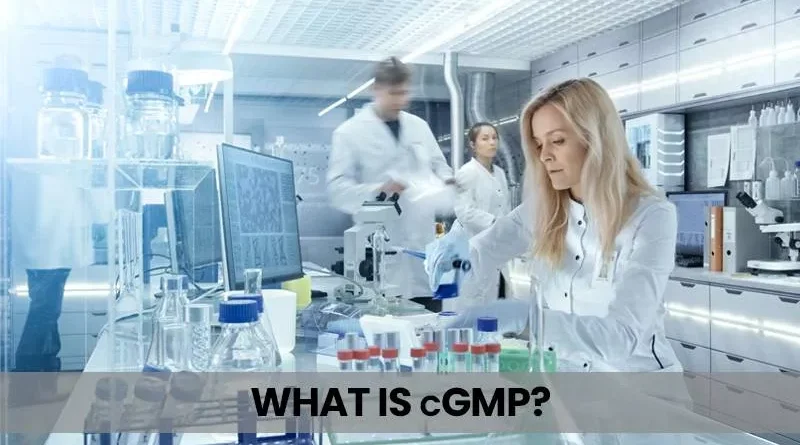What is CGMP?
Knowing the current good manufacturing practices (cGMP) in the industry of Pharmaceutical. Initially, it looks as if trying to have a handful of water. It is a complicated concept that is difficult to hold together. Currently, the FDA offers 34 distinct final guidance documents for the cGMP in the pharmaceutical industry, demanding process validations, quality metrics, data integrity, and multiple other topics.
WHAT IS cGMP?
The FDA’s explanation of cGMP is correct. The details include a final guidance file that is 10 to 30 pages lengthy; it is comprehensive; however, it’s not clear. As a result, reading the cGMP guidelines given by the regulatory agency leaves you blank with many questions.
Suppose you are thinking, why the cGMP and why the quality by design matters. You are not solely thinking about it. We will cover the actual definition for these important guidelines, which is easier and simpler for you to understand.
The FDA explains the cGMP as a system to assure a proper design, monitoring, and control of the manufacturing procedures and facilities in the pharma and other FDA holding industries. In addition, the system is created to support firms assuring drug products as the correct identity, strength, purity, and quality.
cGMP systems have a series of controls for the quality-focused operations that include,
- Management Systems
- Quality Raw Materials
- Operating Procedures
- Detecting Deviations
- Investigating Deviations
- Reliable Testing
If cGMP is followed, organizations avoid many common causes of quality failures that threaten patient safety, such as drug contaminations, mix-ups, and deviations. As per the FDA, it is very clear that cGMP is created for flexibility to offer a global framework for the overall pharmaceutical industry. The guidelines are not a checklist; they are minimum requirements for total quality management.
According to the latest cGMP released in 2016, the Q7 good manufacturers practice guidance for active pharmaceutical ingredients. Although it is a 58-page document with some good updates to important cGMP for the industry, it has also sparked more questions than it answered to many pharmaceutical organizations. So the FDA followed up with a Q&A in 2018 to clear some of the most basic questions on the latest guidance. Some of these questions are highlighted here, that insight on the subject matter experts.
WHY CURRENT GMP?
Questions: Why is “good manufacturing practice” preceded by “current”? Does the first letter of this acronym matter?
International Society for Pharmaceutical Engineering:
The “c” stands for “current,” reminding manufacturers that they must employ up-to-date technologies and systems to comply with the regulation. For example, systems and equipment used to prevent contamination, mixups, and errors may have been first-rate 20 years ago but maybe less than adequate by current standards.
Maud Breitbarth, Quality Audit Manager, Norgine:
Maybe you already faced an inspection, resulting in observations due to aging facilities, processes, or procedures. There are also a couple of other influencers to aging facilities. First, governmental legislation can change. Second, industry advancements and developments can also alter what is considered state-of-the-art. This evolution takes place faster than your facilities do. You’ve probably already experienced that the ‘c’ in the cGMP status needs to be brought back into your facility, processes, or procedures, and it appears to be a big hurdle to overcome.
The FDA launches systems for cGMP to highlight the demand for flexibility in the overall QA management. For example, the firm cannot afford to have strict guidelines focused on total quality management (TQM) or struggle to have the next set of cGMP launched. Or any other issues are happening that demand the organization to change its patterns.
Quality management is not simply a checklist, it is a moving target, and the firms should adapt their practices to add the latest knowledge, real-time data, and other sources of insights.
The Global Compliance Panel
The best practice is to keep transforming and have the most advanced overshadow the existent ones; the FDA expects the manufacturers to stay ahead of their latest regulations as they pass, called cGMP, which means. “Current,” good manufacturing practice. The GMPs and the cGMPs are not solely rigid and monolithic sets of standards or rules that anyone expects to add into their manufacturing systems. Instead, the regulatory agencies prescribe a wide set of general principles, due to which a manufacturer from a specific industry performs a minimum level of quality demands, the ones that are appropriate to it.
It is impossible to write down global quality instructions in the pharmaceutical industry. Especially when the industry is in an active state of change. The standards work for a mature enterprise with an extensive portfolio of market-approved drugs that are not the right standards for a small pharma startup with a universal distributed workforce. The organizations have to understand the cGMP and structure the other systems for complete quality management to explore an approach that removes the risk and scales.
It is easier for those who have been in this industry for decades to identify that “design over inspection” is a new term within the cGMP. The FDA integrated the principle of QbD, “Quality by Design,” in 2011 along with the success of a two-year QbD pilot program and the accomplishment of the ICH Q8, Q9, and Q10 guidelines. Well, what does it mean?
Quality by design creates control in your processes instead of inspections to capture deviations or risks. The organizations require to add a comprehensive system for quality management or eQMS software that integrates data with the operations to create quality into designs and manufacturing. The QMS system accommodates constant risk assessment and permits leaders to moderate controls in real-time instead of depending on the inspections, complaints, and testing. As a result, the quality by design saves costs, facilitates organizational agility, and enhances results.
THE BENEFITS OUTWEIGH THE RISK
John David, Senior Quality Assurance Specialist, Kite Pharma:
The bottom line is that when the FDA enforces cGMP, they’re ensuring that drugs are safe for consumers and their health benefits outweigh their risks.
From the FDA’s standpoint, very few pharmaceuticals have no patient safety risk. The risk is expected in multiple forms, including:
- Harmful interactions among drugs, foods, or supplements.
- Risks that a drug cannot provide the expected outcome.
- The chance of adverse side effects.
The FDA reached drug safety as a benefit-risk equation by constantly compiling and understanding data on the drug efficacy and risks. The insights are gathered from clinical trial data, clinical patient data, billing information, and emerging academic research. The risk to the target population begins to outweigh the benefits. The FDA takes action, including recommending Pharma manufacturers adopt a formal strategy for REMs Risk Management and Mitigation.
A Reliable Safeguard
Gary E Ritchie, Consultant / Director, InfraTrac, Inc:
Compared to the potential financial and safety-related consequences of noncompliance, properly implemented cGMP should not be seen as a regulatory burden but a reliable safeguard against potentially disastrous outcomes—a point made clear in 2012 when improper compounding at the New England Compounding Pharmacy sparked an outbreak of fungal meningitis which resulted in 64 deaths, 751 injuries, and 25 counts of second-degree murder.
The tragedies as the compounding error in New England highlights the actual purpose of the FDA’s cGMP. The systems are not designed to offer a rigid framework for the pharma businesses. Having cGMP as a set of hoops to jump through is a mistake. The failure to adjust can have real and devastating consequences. Organizations need to understand how the cGMP applies to their operations and how the FDA evaluates this compliance. So, instead of meeting the requirements, the firms can concentrate on adopting management systems that comply with FDA demands and enhance patient safety.
Establishing Strong Systems
To follow cGMP includes creating strong quality management systems, using good quality raw materials, implementing robust operating procedures, meticulously screening and investigating product quality deviations, and maintaining reliable testing laboratories.
To follow cGMP, a company must have facilities kept in good condition; Equipment that is carefully maintained and calibrated; Employees who are qualified and fully trained and; Operating procedures that are reliable and reproducible.
In the upcoming years, the concept of creating a strong system has evolved far beyond its original scope. This cGMP principle was designed to require pharma manufacturers to handle their materials testing. The strong systems have effective partnerships with the upstream suppliers for the raw materials and components. The testing raw materials at your quality control laboratory are not enough, especially if we are dealing the important materials. Today, pharma companies have to actively audit the suppliers and create effective working relationships. A third party is currently subjected to a great deal of attention and discussion in the pharma industry; it is equally important.
If the materials are bad, your firm lacks a robust system. Therefore, it is late to add controls upstream. As a pharma manufacturer, “Strong systems” means developing a working understanding of your suppliers’ controls and quality management systems. This also demands a great partnership and trust.
IS YOUR PHARMA COMPANY QUALITY-DRIVEN?
The cGMP is not a management system. Instead, they are aligned with principles integrated by the FDA that act as a small standard for operations in the industry. Following the cGMP to the letter of the law can support your firm to align with the FDA requirements. However, it is not the most genuine approach for operations.
The FDA’s guidance realizes the cGMP’s role and limitations and supports businesses to adopt healthy and flexible systems for total quality management to exceed these demands. By understanding the definition and aim of the cGMP, you can change the shift from focusing your energy and resources on compliance to becoming a quality-driven firm. So, when it’s about cGMP, is your organization lacking, meeting the demands, or setting the bar? Take a short, insightful self-guided survey to educate how you stack up against the pharma industry best practices for quality and your risk of adverse findings.






